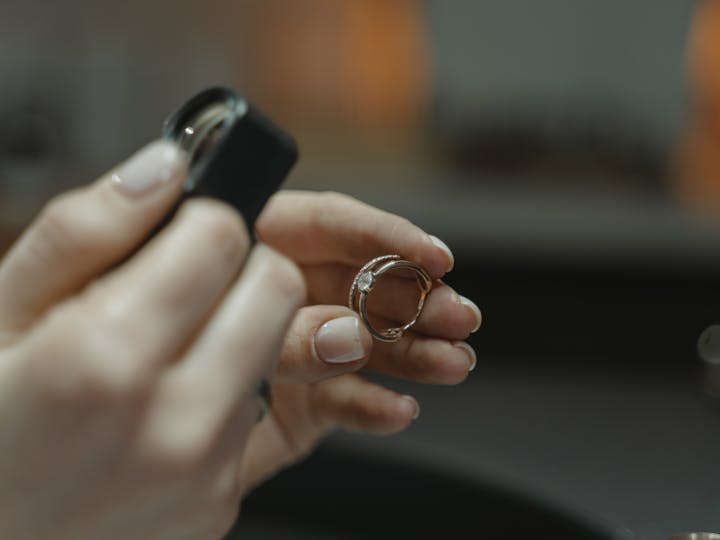Selling jewelry can provide a fantastic opportunity to make quick bucks. Whether it’s a loose or ring-mounted diamond, there are multiple outlets where you can dispose of your precious asset for instant cash.
However, not every jewelry store provides reasonable bargains. Some outlets are downright unscrupulous, operating solely to defraud well-intentioned jewelry owners.
Therefore, due diligence is critical when searching for a credible diamond buyer.
In this guide, we outline the best strategies for selling your jewelry in New York City.
1. Determine If It’s Loose Or Ring-mounted Jewelry
Loose jewelry is the one that hasn’t been set in a ring. To effectively sell jewelry NYC, establish whether it exists as a standalone stone or is already pre-set in an engagement ring.
Loose diamonds are easier to grade, as they reveal any flaws and inclusions remarkably better. However, these jewelry pieces are often priced considerably lower than their ring-sit counterparts.
With mounted diamonds, you’re offering a jewelry buyer the complete package. That explains their relatively higher prices.
2. Distinguish Between Natural and Lab-Grown
Natural diamonds are naturally obtained, while lab-grown diamonds are developed in special gemological laboratories.
Generally, natural jewelry has a higher sentimental value than lab-grown jewelry. Therefore, they attract a higher price tag.
Just ensure your natural jewelry is in a near-perfect state. Otherwise, it may lose this critical advantage.
3. Consider If It’s Brand-new or Pre-owned
Most pieces of jewelry held by individual owners are considered pre-owned or secondhand. That’s regardless of whether you purchased the item and decided to sell it only a few hours later.
However, older jewelry tends to have more flaws. More blemishes translate into a lower resale price.
Sometimes, holding on to a piece of jewelry for longer can raise its sentimental value and resale price. This is especially true for heirloom and antique jewelry.
4. Define the Jewelry Based On the 4 Cs
A diamond’s worth is typically measured against four principal factors known as the Four Cs. They include;
Carat Weight
Larger diamonds are rarer. So, the higher the carat weight, the more expensive the jewelry.
Cut
Cut measures a diamond’s proportions. Popular and fancier diamond cuts like round brilliant have a higher price tag.
Color
A diamond’s worth increases proportionately to its transparency. Clearer stones (with a color rating closer to D on the D-Z scale) are generally more expensive than colored ones.
Clarity
Clarity denotes the absence of flaws and inclusions in a diamond. If your jewelry has fewer blemishes, expect a relatively higher resale price.
5. Understand The Diamond’s Shape and Fluorescence
A diamond’s shape denotes its style. Fancy shapes have a higher resale value.
Meanwhile, fluorescence refers to how a piece of jewelry handles and reflects light.
Findings suggest that up to 30% of all diamonds fluoresce. However, fluorescence is considered a flaw, particularly when valuing transparent diamonds.
6. Get Your Jewelry Appraised
Obtaining a professional appraisal is a critical step before selling your diamond in New York City.
Even with all the above information, the insights of an independent jewelry valuer can be invaluable in helping estimate your diamond’s worth.
Jewelry appraisals are principally based on the item’s craftsmanship, sentimental value, and prevailing market dynamics.
7. Get Your Jewelry Certified
Not to be confused with appraisal, diamond certification (also called grading) focuses on the jewelry’s distinctive characteristics. It’s here that the famous Four Cs (plus other physical attributes like fluorescence) will come to bear.
Like appraisal, certification should culminate in a report.
The grading report outlines your jewelry’s distinctive features, enabling you to negotiate from a point of information.
8. Pick Dealers Wisely
There are multiple places to sell jewelry in New York City, with each outlet having its pros and drawbacks.
Research a jeweler’s reputation by reading online reviews before selling your diamond to them. Check what previous customers had to say about the store, especially in terms of its price offerings and overall customer service.
To get the best bargains on your jewelry, insist on selling it to local jewelry specialists. Avoid pawnshops and consignment stores.
Pawnshops typically offer instant payouts on jewelry. However, that’s often in exchange for rock-bottom rates.
Meanwhile, consignment stores will try to sell a diamond on your behalf and get a marginal cut. These outlets don’t guarantee sales or offer immediate payouts.
9. Bring Original Certificates and Boxes
Whether you’re selling your jewelry online or directly in a physical store, ensure you bring original appraisal and grading certificates.
Besides, carry the original packaging materials if you still have them.
Having these items can boost your diamond’s resale price by enhancing its appeal among prospective buyers. They’re particularly recommended for antique or branded jewelry.
Original boxes also make it easier to transport and present the jewelry to a store.
10. Don’t Hesitate To Haggle
Many jewelry buyers will quote a price that’s reasonably lower than your diamond’s worth.
Don’t hesitate to negotiate for a better offer. If you’re selling your jewelry online, set a listing price within the market rate.
Note that overpricing a diamond may turn away potential buyers, while underpricing the jewelry could devalue it.
Wrap Up
Selling jewelry is easier if it’s appraised and certified. So, even before you go scouting for prospective jewelers in New York, it’s best to get your diamond valued and graded.
Another best practice is to research a diamond buyer’s reputation by sampling online feedback from their previous clients. Top-rated jewelers typically offer excellent bargains, enabling you to recoup hefty returns on your investment.


